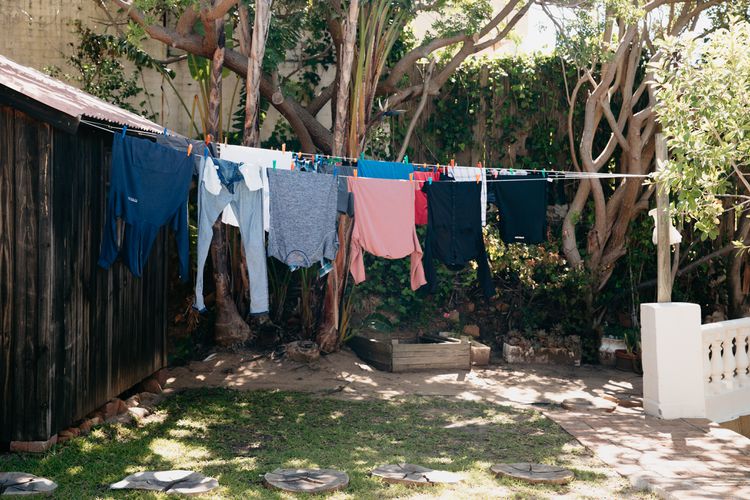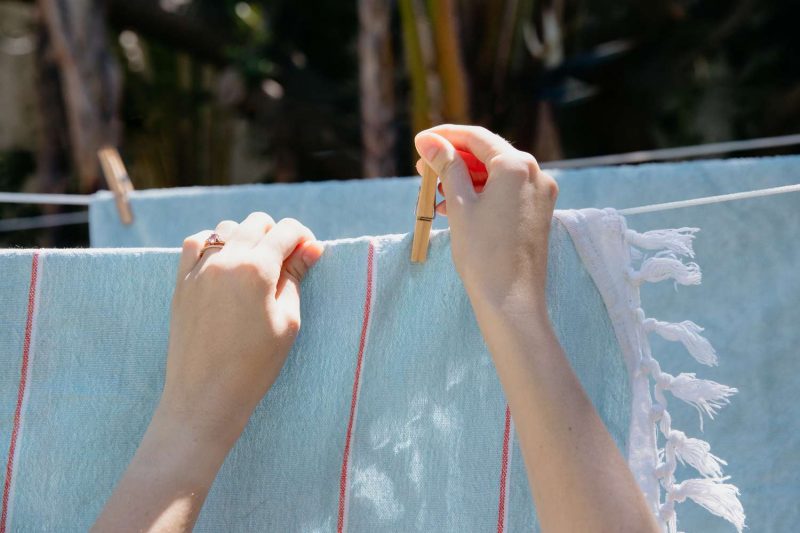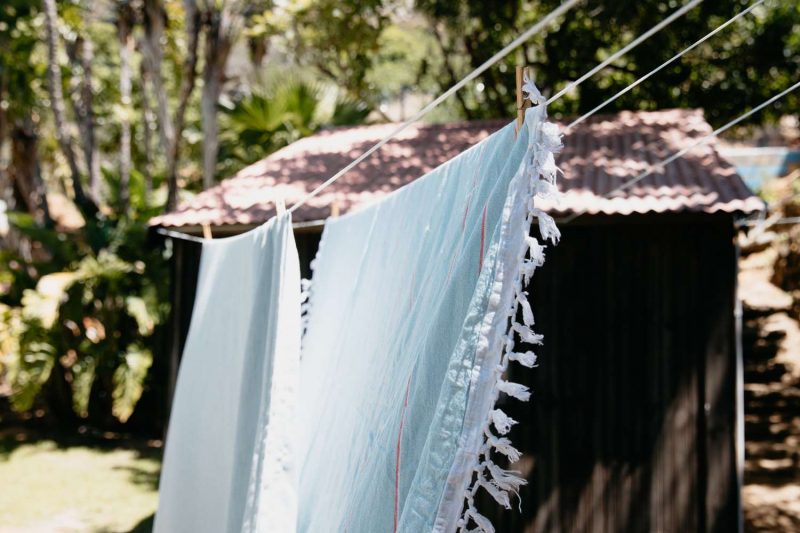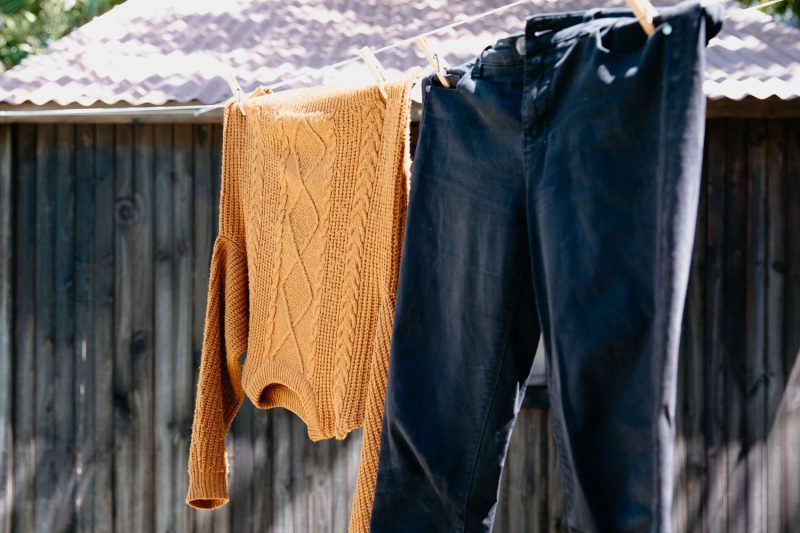
Air drying clothes and household textiles is not only an eco-friendly option but also extends the lifespan of fabrics, as it is a gentler drying method compared to the heated tumbling of a dryer. Additionally, hanging clothes on a line provides a wonderful opportunity to incorporate a bit of physical activity into your daily routine.
All you require are a few basic items: a line, some clothespins, and maybe a few posts, while the breeze takes care of the rest. In many areas across the United States, you can dry your laundry outside during pleasant weather from spring to autumn. On chilly or wet days, you can also set up a clothesline inside your home.
Discover strategies and methods for properly hanging garments on a clothesline to minimize creases and preserve the vibrancy and form of your laundry.
Contents
Clothesline Advice
Whether you’re using an indoor or outdoor clothesline, here are some suggestions to maintain the appearance of your garments and reduce wrinkles:
- To minimize wrinkles and decrease ironing duration, shake each garment thoroughly before hanging it on the line. Once it’s secured, pull the bottom corners firmly to help smooth out additional wrinkles.
- One of the most effective methods to minimize wrinkles is to promptly fold the dry garments as you take them off the clothesline. If you let them pile up in a laundry basket for a few hours, you may find yourself needing to use an iron.
- If you find that line-dried towels and jeans are too rigid, you can toss them in the dryer for a short period (about 5-10 minutes) before finishing the drying process on the line.
- To avoid sun damage to your clothes, set up your clothesline in a shaded, breezy spot. On the other hand, if you want to utilize sunlight to whiten your white garments, orient your line in a north/south direction for optimal sun exposure. If you have four or more lines, place the white items that require the most bleaching on the outer lines, while hanging colored garments on the inner lines.
- To avoid staining, opt for a clothesline made of coated materials that resist rust. A coated wire line offers greater durability and maintains its shape better than a natural rope line. Make sure to clean the clotheslines every month to eliminate dust, tree sap, and bird droppings.
- Select clothespins that are resistant to rust and fading. After each use, take them off the line to extend their lifespan and maintain their cleanliness. Consider purchasing or crafting a clothespin bag that can be attached to the clothesline and easily brought indoors after use.
- To expedite the drying process, hang garments individually, ensuring there is space between them and that they are fully extended. Use as many clothespins as necessary to avoid any drooping. If drying time is not a concern but space on the line is, you can secure the outer corners of two items of clothing together with a single clothespin.

Tips for Hanging
Pants
Align the inner leg seams and secure the hems of the legs to the line, allowing the waist to hang down. If you have ample line space, you can attach one leg to one line and the other leg to the next line to expedite the drying process.
Blouses and T-shirts
Secure the shirts by pinning the bottom hem at the side seams. Alternatively, you can use wooden hangers to hang them and attach the hangers to the clothesline. Both techniques help to avoid stretching or wrinkling the shoulders.
Socks
Pair the socks up and secure one corner of the pair with a clothespin, allowing the socks to hang freely for faster drying.
Linen and Coverlets
Bend the sheet or blanket in half and secure the corners of the open ends to the clothesline with clips. This will help avoid a crease in the center of the fabric. If it droops significantly or the wind is strong, consider adding one or two additional clothespins in the middle section.
Bath Linens and Cushion Covers
To achieve the fastest drying, hang towels by their corners. For lightweight flat items, such as pillowcases, consider hanging them in pairs.

Items You Should Avoid Line Drying
- Garments made from stretchy materials, such as sweaters and certain loose-knit items, should not be air-dried. If the care label from the manufacturer indicates that the item should be dried flat, avoid hanging it up, whether indoors or outdoors!
- Delicate materials such as lace, which can easily catch and tear in a sudden gust, should be avoided for line drying.
- Vintage textiles that exhibit tears or are particularly heavy when damp should not be hung out to dry. The added weight of the wet material could exacerbate any existing damage.


